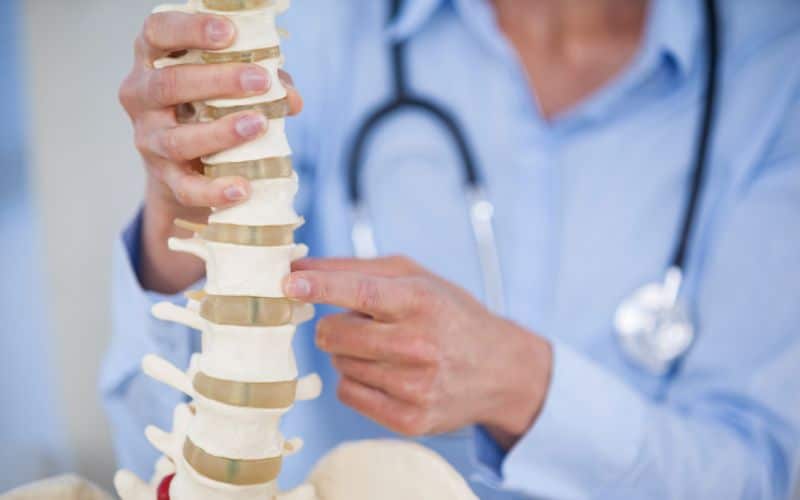
The landscape of spine surgery has undergone a remarkable transformation over the years, marking a significant leap from traditional spinal fusion techniques to the modern, more advanced approach of artificial disc replacement (ADR).
This evolution reflects the medical community’s and (spine surgeons in Rancho Santa Margarita, CA) ongoing quest to improve patient outcomes, minimize recovery times, and preserve the natural biomechanics of the spine. As we delve into the history and advancements in spine surgery, the shift towards ADR emerges as a pivotal development, offering a promising horizon for individuals suffering from debilitating spinal conditions.
Historical Overview of Spine Surgery
Spine surgery’s roots can be traced back to ancient times, with early procedures primarily focused on relieving pain caused by spinal deformities. However, it wasn’t until the 20th century that significant advancements were made, particularly with the advent of spinal fusion surgery. This procedure involves the fusion of two or more vertebrae to eliminate motion between them, thereby reducing pain caused by movement. For decades, spinal fusion stood as the cornerstone of surgical intervention for a broad range of spinal disorders, including degenerative disc disease, scoliosis, and spinal stenosis.
Despite its widespread use, spinal fusion surgery has been accompanied by certain limitations. One of the most significant is the potential for adjacent segment disease (ASD), a condition where the vertebrae adjacent to the fusion site undergo accelerated degeneration due to the increased mechanical stress placed upon them. This can lead to a cascade of problems requiring further surgical intervention, prompting researchers and surgeons to seek alternative solutions.
The Rise of Artificial Disc Replacement
Enter artificial disc replacement, a technique that has revolutionized the field of spine surgery. Introduced in Europe in the 1980s and later gaining FDA approval in the United States, ADR represents a paradigm shift in treating spinal disorders. Unlike spinal fusion, ADR aims to preserve the natural biomechanics of the spine by replacing the diseased disc with an artificial one. This not only alleviates pain but also maintains the spine’s flexibility and motion, significantly reducing the risk of ASD.
ADR’s benefits extend beyond preserving motion; the procedure has been associated with shorter hospital stays, quicker return to normal activities, and, importantly, improved long-term outcomes. By mimicking the natural disc’s function, artificial discs help distribute stress evenly across the spine, lessening the likelihood of adjacent segments deteriorating prematurely.
Technological and Material Advancements
The success of ADR is partly due to the remarkable advancements in biomaterials and implant design. Early artificial discs were simplistic in design and limited in their ability to replicate the complex motion of a natural disc. Today’s implants, however, are feats of engineering, designed to mimic the natural disc’s movement in all planes, including flexion, extension, lateral bending, and rotation. Materials such as medical-grade polyethylene, titanium, and cobalt-chromium alloys are commonly used, offering durability, biocompatibility, and the capacity to integrate with bone.
Patient Selection and Future Directions
Not everyone is a candidate for ADR, and the procedure’s success heavily depends on careful patient selection. Ideal candidates are typically those with single-level degenerative disc disease without significant facet joint arthritis or spinal instability. As research continues and long-term data accumulate, the indications for ADR may expand, potentially offering hope to a broader patient population.
The future of spine surgery is likely to see even more sophisticated artificial discs, including those that can adapt and respond to the changing biomechanics of the spine over time. Additionally, advancements in surgical techniques, such as minimally invasive and robotic-assisted surgery, promise to further improve outcomes and reduce recovery times for patients undergoing ADR.
Final Thoughts
The evolution of spine surgery from spinal fusion to artificial disc replacement marks a significant milestone in the treatment of spinal disorders. By preserving the spine’s natural movement and reducing stress on adjacent segments, ADR offers a promising alternative for patients seeking relief from chronic back pain.
As technology advances and our understanding of spinal biomechanics deepens, the future of spine surgery looks bright, with the potential to provide even better outcomes for patients worldwide. This journey from fusion to replacement underscores the medical community’s relentless pursuit of innovation, continually pushing the boundaries of what is possible in the quest for better health and mobility. At Hamid R. Mir M.D. we share this same goal and as a leading spinal surgeon in Rancho Santa Margarita, CA we proudly serve the greater Orange County area.



